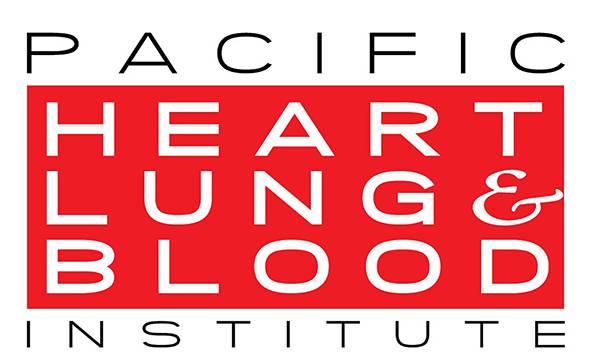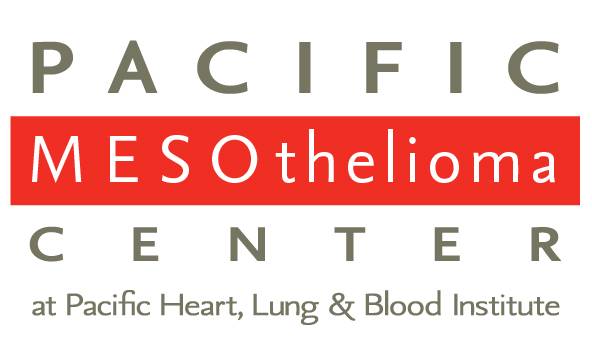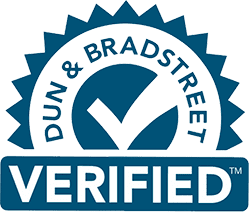HomeDivisionsBlood DisordersVascular Disease
ALL ABOUT VASCULAR DISEASE
The vascular system, also called the circulatory system, is a network of blood vessels – arteries, veins and capillaries – that transport blood to and from the heart. The blood vessels pick up oxygen from the lungs and then transport it to the muscles and organs. The circulatory system is divided into the pulmonary circulation and the systemic circulation. The systemic circulation transports blood to all parts of the body except the lungs. Oxygen-rich blood filled with nutrients is carried through the arteries throughout the body. Oxygen-depleted blood flows back to the heart through the veins where it picks up oxygen to start the cycle all over again. The pulmonary circulation is a part the cardiovascular system comprised of a network of blood vessels located between the heart and lungs. In pulmonary circulation oxygen-depleted blood is carried away from the heart and to the lungs, and then returned as oxygen-rich blood back to the heart.
Impaired blood vessels obstruct the flow of blood filled with oxygen to reach tissues. Injury or damage to blood vessels can lead to problems such as weakened blood vessels that burst and cause bleeding, blood clots, and atherosclerosis, also known as hardening of the arteries due to the buildup of fatty deposits on the inner walls of arteries.
Vascular Disease is a general term for any cardiovascular disorder affecting the circulatory system, primarily diseases of the arteries, veins and lymph vessels but also blood disorders that block circulation. Peripheral Vascular Disease (PVD) refers to disorders of blood vessels outside the heart that involve the peripheral circulation rather than cardiac circulation. Peripheral Artery Disease (PAD) is one of the most common forms of PVD. Although the terms PVD and PAD are often used interchangeably, they are distinct. PVD consists of diseases of both peripheral arteries and peripheral veins. PVD of the arteries and veins are sometimes linked with common risks, but they differ in their symptoms. For example, PAD is characterized primarily by intermittent claudication due to insufficient blood flow. Intermittent claudication is experienced as arm or leg pain or cramping in the arms or legs, especially in the calf, during walking or exercise that disappears with rest. Venous conditions, or disorder of the veins, such as peripheral vein disease include varicose veins and spider veins. PVD also encompasses cerebrovascular disease, a condition where blood vessels in the brain are injured or damaged.
Major Types of Peripheral Vascular Diseases
- Peripheral Artery Disease (PAD)
- Aneurysm
- Renal (Kidney) Artery Disease
- Carotid Artery Disease
- Raynaud’s Phenomenon (Raynaud’s Disease or Raynaud’s Syndrome)
- Buerger’s Disease
- Peripheral Venous Disease
- Blood Clots in the Veins
- Deep vein thrombosis (DVT) — a blood clot occurring in a deep vein.
- Pulmonary embolism – a blood clot that dislodges from a vein and travels to the lungs.
- Chronic venous insufficiency (CVI) — a condition in which damaged vein valves or a DVT causes long-term pooling of blood and swelling in the legs.
Risks of Vascular Disease
Risks of most vascular diseases include:
- Older age
- Family history of vascular or heart diseases
- Pregnancy
- Illness or injury
- Long periods of sitting or standing still
- Conditions such as diabetes or elevated cholesterol that affect the heart and blood vessels
- Smoking
- Obesity
Symptoms of Vascular Disease
Symptoms are specific to each type of peripheral vascular disease.
Diagnosis of Vascular Disease
Diagnosis of a vascular disease can be difficult because of the wide variety of symptoms associated with various vascular disorders. Diagnosis is usually based on specific symptoms, family history, and a physical examination performed by a specialist. Blood flow in the legs or blood pressure may need to be examined if a peripheral vascular disease is suspected.
The physical exam may vary slightly for different circulatory conditions, depending on the type of vascular disease thought to exist. Abnormal sounds of blood flow on the neck may indicate that cerebrovascular disease is present.
Additional tests and exams may include:
- Cerebral Angiography (Carotid Angiogram)
In this noninvasive test, a catheter is inserted into the patient’s artery in the leg that reaches the arteries of the neck. This procedure is similar to a coronary angiogram used to diagnose cardiovascular conditions.
- Carotid Duplex (Carotid Ultrasound)
Also a noninvasive test, the carotid duplex utilizes ultrasound waves in order to detect plaque, blood clots, or any manifestations of abnormal blood flow.
- Computed Tomography (CT) X-ray Scan
CT scans reveal hemorrhagic strokes and other cardiovascular conditions.
- Doppler Ultrasound
With the use of high frequency sound waves, the Doppler detects abnormalities in a vein or artery in both cerebrovascular disease and peripheral vascular disease.
- Electroencephalography (EEG)
By showing electrical impulses in the brain, the EEG is used to diagnosis cerebrovascular conditions.
- Magnetic Resonance Imaging (MRI)
3D images of the body structure using MRI technique reveal signs of previous strokes.
- Lumbar Puncture
In this invasive test, a sample of cerebrospinal (CSF) fluid from the space surrounding the spinal cord is taken and analyzed in order to detect a cerebral hemorrhage.
- Ankle Brachial Pressure Index (ABPI/ABI)
This test measures the fall in blood pressure in the arteries supplying the legs in order to confirm peripheral vascular disease.
Treatment of Vascular Disease
Treatment of Vascular Disease involves lifestyle changes and therapies, including medications and sometimes surgery and other procedures, that are specific for each condition.
MAJOR PERIPHERAL VASCULAR DISEASES
Peripheral Artery Disease (PAD)
As a person ages, plaque — the build-up of fat and cholesterol deposits – tends to form on the inside walls of peripheral arteries (the blood vessels outside the heart), just as it does in the coronary arteries that transport blood to the heart. The accumulation of plaque over time causes the artery to narrow, limiting blood flow. Reduced blood flow to any tissues in the body due to clogged arteries is called ischemia. Clogged peripheral arteries can lead to various types of vascular disease. In peripheral artery disease (PAD), blockage in the arteries outside the heart can restrict blood flow to the legs, causing leg pain or cramps during activity (claudication) and increasing the risk for a heart attack or stroke. Nearly 5% of Americans over the age of 50 have PAD.
Most people with PAD—even if they do not have leg symptoms—are unable to walk as fast or as far as they could before developing claudication.
Risks of Peripheral Artery Disease
- Older than 50 years of age
- Smoking or prior smoking (up to four times greater risk of PAD)
- Diabetes
- High blood pressure (hypertension)
- High blood cholesterol
- History of vascular disease, heart attack, or stroke. Patients with heart disease have a 33% chance of also having PAD
- African American (more than twice as likely to have PAD compared with whites)
Signs and Symptoms of Peripheral Artery Disease
- Claudication
Fatigue, heaviness, tiredness, cramping in the leg muscles (buttocks, thigh, or calf) during physical activities such as walking or climbing stairs. The pain subsides when activity is stopped. Pain in the legs and/or feet that disrupts sleep. - Sores or wounds on toes, feet, or legs that heal slowly, poorly, or not at all.
- Color changes in the skin of the feet, including paleness or blueness.
- Lower temperature in one leg compared to the other leg.
- Poor nail growth and reduced hair growth on toes and legs.
- In some patients there are no symptoms.
Diagnosis of Peripheral Artery Disease
- Medical and Family History
- Physical Exam
– Pulses in the legs and feet to determine if there is there is adequate blood flowing to these areas;
– Color, temperature, and appearance of the legs and feet.
– Signs of poor wound healing on the legs and feet. - Diagnostic Tests
– Ankle-brachial Index (ABI)
ABI confirms peripheral vascular disease by measuring the fall in blood pressure in the arteries supplying the legs.
– Doppler Ultrasound Test
Doppler uses high frequency sound waves to detect injury in an artery in both cerebrovascular disease and peripheral vascular disease.
– Blood tests for diabetes and cholesterol levels
Treatment of PAD
Lifestyle changes
- Quit smoking
- Reduce elevated blood pressure, cholesterol, and blood glucose levels
- Eat healthy diet of foods low in saturated fat, trans fat, and cholesterol, with plenty of whole grains, vegetables, and fruits
- hysical activity
- Achieve and maintain a healthy weight
Medication
- To reduce high blood pressure and cholesterol levels
- To treat diabetes
- To prevent the formation of blood clots that could cause a heart attack or stroke
- To help reduce leg pain while walking or climbing stairs
Procedures and Surgeries to improve the blood circulation to the legs and the ability to walk
- Angioplasty
- Bypass graft surgery
Risk for Complications
Peripheral artery disease is associated with increased risk for arterial disease involving the coronary arteries within the brain.
Aneurysm
An aneurysm is an abnormal bulge or ballooning in the wall of a blood vessel caused by the weakening of the blood vessel wall. An aneurysm usually forms in the aorta (aortic aneurysm), the primary blood vessel leaving the heart. The two types of aortic aneurysm are a thoracic aortic aneurysm (part of aorta in the chest) and abdominal aortic aneurysm. An abdominal aortic aneurysm can involve arteries above the kidneys (suprarenal aneurysm), the main kidney (renal) arteries (juxtarenal aneurysm), or arteries below the kidneys (infrarenal aneurysm).
Small aneurysms are not generally dangerous, but they increase a person’s risk for:
- Atherosclerotic plaque (fat and calcium deposits) formation at the site of the aneurysm
- A clot (thrombus) forming at the site and detaching from the plaque
- Increase in the aneurysm size, causing it to press on other organs and produce pain
- Ruptured aneurysm that may burst under stress and become potentially life threatening
Symptoms of Aortic Aneurysm
- Often absent
- Abdomen, chest, or back pain and discomfort
- Ruptured aneurysm may cause severe pain and bleeding, and lead to death within minutes to hours
- Clots forming in bulging area of an aortic aneurysm due to slowed blood flow
- Dislodged blood clot that travels from the chest area to the brain where it may cause a stroke
- Dislodged blood clots that break off from an aortic aneurysm in the abdominal area and blocks blood flow to the belly or legs
Diagnosis
Aneurysms are usually diagnosed by chance during exams or tests performed to screen for other conditions.
Risk Factors for Abdominal Aneurysms
- Men Ages 65 to 75 who have smoked.
- Men at least 60 years old with a first-degree relative who has had an aneurysm
- Close relative who has had a thoracic aortic aneurysm.
Treatment of an Aortic Aneurysm
- High blood pressure medicine (small aneurysms)
- Surgery (large aortic aneurysm)
Renal (Kidney) Artery Disease
Renal Artery Disease, usually caused by atherosclerosis of renal arteries disease, occurs in people with generalized vascular disease. A blockage in the kidney arteries can lead to renal artery disease (stenosis), characterized by symptoms of uncontrolled high blood pressure, congestive heart failure, and abnormal kidney function.
Carotid Artery Disease
Carotid arteries are on either side of the neck. Carotid artery disease develops when atherosclerosis occurs in the carotid arteries, located on either side of the neck, that transport oxygen-rich blood to the brain. The accumulation of plaque can obstruct blood flow to the brain or lead to the formation of a blood clot which dislodges and travels to the brain, causing a stroke or blindness.
Raynaud’s Phenomenon (Raynaud’s Disease or Raynaud’s Syndrome)
Raynaud’s phenomenon involves spasms of the small arteries of the fingers and, in some cases, the toes, caused by excitement or exposure to cold. By temporarily slowing or stopping blood supply to the area, Raynaud’s Disease causes the skin to appear white or bluish and cold or numb. Symptoms of Raynaud’s Syndrome are sometimes associated with underlying diseases such as lupus, rheumatoid arthritis, or scleroderma.
Buerger’s Disease
Buerger’s Disease usually affects the small and medium sized arteries, veins, and nerves. As the arteries of the arms and legs become narrowed or blocked, blood supply to the fingers, hands, toes and feet is reduced. Symptoms include pain in the legs and feet, especially, and arms and hands, even at rest. If the blood flow obstruction is severe, the tissue may die (gangrene), requiring amputation of the fingers and toes. Superficial vein inflammation and symptoms seen in Raynaud’s disease are frequently observed in patients with Buerger’s Disease. Tobacco use or exposure appears to be a triggering factor in Buerger’s Disease.
PERIPHERAL VENOUS DISEASE
Common Peripheral Venous Diseases include:
Blood clots in the veins
- Deep vein thrombosis (DVT) — a blood clot occurring in a deep vein.
- Pulmonary embolism – a blood clot that dislodges from a vein and travels to the lungs.
Chronic venous insufficiency — a condition in which damaged vein valves or a DVT causes long-term pooling of blood and swelling in the legs.
Causes of Blood Clots in the Veins
- Long bed rest and/or immobility
- Damage to veins from injury or infection
- Damage to the valves in the vein, leading to pooling of blood near the valve flaps
- Pregnancy and hormones (such as estrogen or birth control pills)
- Genetic diseases that increase the risk for clotting
- Conditions that cause slowed blood flow or thicker blood, such as congestive heart failure (CHF) [HYPERLINK] or certain tumors
- Surgery, including procedures on the lower extremities
Deep Vein Thrombosis (DVT)
Deep Vein Thrombosis (DVT) refers to a blood clot that forms in a vein deep within the body
As blood thickens and clumps together. Deep vein blood clots usually develop in the lower leg or thigh, although they may form in other areas. A DVT that breaks off and becomes a loose clot is called an embolus. In a pulmonary embolism, an embolus travels through the bloodstream where it reaches an artery in the lungs, eventually obstructing blood flow and damaging the lungs. A pulmonary embolism may impair other organs in the body and, in severe cases, be fatal.
Blood Clotting Disorders
Blood clotting disorders are diseases that in which the blood is more likely to form blood clots in the arteries and veins. These conditions include:
- Elevated levels of factors in the blood which cause blood to clot (fibrinogen, factor 8, prothrombin).
- Deficiency of natural anticoagulant (blood-thinning) proteins (antithrombin, protein C, protein S).
- Elevated blood counts.
- Abnormal fibrinolysis (the breakdown of fibrin).
- Abnormal changes in the lining of the blood vessels (endothelium).
Chronic Vein Disease and Chronic Venous Insufficiency (CVI)
Chronic vein disease is a vein disorder that typically affects the legs. As the vein walls become weakened and stretched over time, the veins bulge out and twist. Chronic Venous Insufficiency (CVI) develops if the veins are no longer able to pump sufficient blood back to the heart, instead causing long-term pooling of blood and swelling in the legs. If left untreated, fluid will leak into the surrounding tissues in the ankles and feet, eventually leading to skin breakdown and ulceration.
Varicose veins are the most common early sign of vein disease, with about 1/3 of adult women affected. Of the nearly 2.5 million people in the United States diagnosed with CVI, 20% of them will develop ulcers caused by leg vein disease.
Causes of Chronic Vein Disease
- Damage to the vein valves caused by blood clots or deep vein thrombosis
- Weakened vein walls that force the vein to stretch and twist, preventing the valves from closing completely
- Veins that are blocked by blood clots, keeping blood from flowing back to the heart
- Defective vein walls or missing vein valves that were present at birth (rare)
Symptoms of Chronic Vein Disease
Chronic vein disease may not cause any symptoms at first, but as the disease progresses it can lead to symptoms that make everyday tasks difficult. Like heart failure, chronic lung disease, or arthritis, CVI can diminish quality of life. The main symptoms include:
- Varicose veins (early sign of vein disease) with a cord-like appearance and appear twisted or bulging.
- Varicose veins with pain, swelling, or wounds
- Spider veins (similar to varicose veins but usually smaller and closer to the skin)
- Blood buildup in the legs with serious symptoms, including:
– Swelling in the legs, ankles, and feet
– Pain, aching, heaviness, or cramping in the legs (generally worse when standing, and improved when the legs are raised)
– Itching, tingling, or burning sensation
– Scaly, itchy rashes (eczema) and thickening of the skin
– Slow or non-healing wounds on the legs (ulcers)
– Darkening of the skin on the legs (severe disease)
Risks for Chronic Vein Disease
- Older age
- High blood pressure
- Obesity
- Lack of exercise
- A family history of varicose veins deep vein thrombosis (or blood clots in the veins)
- Pregnancy
- Job requiring prolonged standing or heavy lifting
- Previous leg injury
Treatment of Venous Vascular Diseases
- Blood thinning (anticoagulant) drugs (DVT) to decrease the chance that existing clots will grow and that new clots will form
- Low molecular weight heparin (LMWH) or standard IV heparin
- Warfarin (long-term blood thinning)
- Removal of severe blood clots by breaking them up with catheters
Prognosis of DVT
DVT rarely causes sudden death, and nearly 96% of patients survive after their first DVT episode. However, up to 30% of those who have a DVT or pulmonary embolism will suffer another episode within 10 years, usually during the first 6 to 12 months. Women have a lower risk for recurrent DVT than men.
Lymphedema
The lymphatic system, an extensive network of lymph vessels and lymph nodes, comprises a separate circulatory system from the vascular system. The lymphatic system helps regulate the immune system’s function to protect the body from foreign substances. Lymphedema refers to an abnormal build-up of fluid that causes swelling, generally in the arms or legs.
Causes
- Lymphedema occurs when lymph vessels or lymph nodes are absent, impaired, damaged or removed.
- Secondary lymphedema results from blockage of the lymphatic system, due to an infection, malignancy, surgery, scar tissue formation, trauma, deep vein thrombosis (DVT), radiation or other cancer treatment.
Symptoms
Lymphedema symptoms include:
- Swelling of part of the arm or leg or your full arm or leg, including fingers or toes
- A feeling of heaviness or tightness in the arm or leg
- Limited range of motion in the arm or leg
- Pain or discomfort in the arm or leg
- Recurring infections in the affected limb
- Hardening and thickening of the skin on the arm or leg
Diagnosis
Diagnostic tests used to detect lymphedema include:
- Magnetic resonance imaging (MRI
- Computerized tomography (CT) X-ray scan
- Doppler ultrasound
- Radionuclide imaging of your lymphatic system (lymphoscintigraphy)
Complications
- Infections, including cellulitis (a serious bacterial infection of the skin) and lymphangitis (an infection of the lymph vessels)
- Lymphangiosarcoma (a rare form of soft tissue cancer that may cause blue-red or purple marks on the skin)
Treatments
- Wrapping the arm or leg
- Massage using manual lymph drainage
- Pneumatic compression (wearing a sleeve over the affected arm or leg that is connected to a pump which inflates the sleeve and puts pressure on the limb)
- Wearing compression garments
To decrease the risk of vascular disease, see your physician for regular check-ups and make lifestyle changes to reduce risks and take the appropriate medications prescribed by your doctor.
References
WebMD.com
Mayo Clinic
Medline Plus
Wikipedia.com
National Heart Lung and Blood Institute
Cleveland Clinic
American Heart Association
HeartHealthyWomen.com
www.medicinenet.com





